Consciousness |
|
Svjesnost |
The origin of consciousness

|
|
Porijeklo svijesti

|
"Von Economo" neurons

|
|
"Von Economo" neuroni

|
The attention network

|
|
Mreža za pozornost

|
A social superhighway

|
|
Društvena superprometnica

|
Emotions and empathy

|
|
Osjećaji i empatija

|
Finely tuned cells

|
|
Fino podešene stanice

|
Our language is loaded with analogies

|
|
Naš je jezik prepun analogija

|
The energy calculation system

|
|
Sustav za izračun energije

|
|
|
|
|
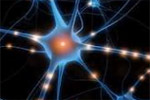
The origin of consciousness
The origin of consciousness has to be one of the biggest mysteries of all time, occupying philosophers and scientists for generations.
So it is strange to think that a little-known neuroscientist called Constantin von Economo might have unearthed an important clue nearly 90 years ago.
When he peered down the lens of his microscope in 1926, von Economo saw a handful of brain cells that were long, spindly and much larger than those around them.
In fact, they looked so out of place that at first he thought they were a sign of some kind of disease.
But the more brains he looked at, the more of these cells he found - and always in the same two small areas that evolved to process smells and flavours...
 Search for more... Search for more...
The origin of consciousness has to be one of the biggest mysteries of all time, occupying philosophers and scientists for generations.
So it is strange to think that a little-known neuroscientist called Constantin von Economo might have unearthed an important clue nearly 90 years ago.
When he peered down the lens of his microscope in 1926, von Economo saw a handful of brain cells that were long, spindly and much larger than those around them.
In fact, they looked so out of place that at first he thought they were a sign of some kind of disease.
But the more brains he looked at, the more of these cells he found - and always in the same two small areas that evolved to process smells and flavours.
Von Economo briefly pondered what these cells might be doing, but without the technology to delve much deeper he soon gave up and moved on with other researches.
» Search for more...
|
|

Porijeklo svijesti
Porijeklo svijesti predstavlja vjerojatno jedan od najvećih misterija svih vremena, kojim se filozofi i znanstvenici bave već generacijama.
Stoga je neobična i sama pomisao da je slabo poznati neurolog po imenu Constantin von Economo možda otkrio važan trag prije gotovo 90 godina.
Kada je 1926. godine pogledao kroz leću svog mikroskopa, von Economo je ugledao pregršt moždanih stanica koje su bile duge, tanke i mnogo veće od onih oko njih.
U stvari, izgledale su toliko drugačije da je isprva pomislio da su znak neke vrste bolesti.
Ali što je više mozgova proučavao, nalazio je sve više tih stanica - i to uvijek u dva identična mala područja koja su se razvila kako bi obrađivala mirise i okuse...
 Potraži više... Potraži više...
Porijeklo svijesti predstavlja vjerojatno jedan od najvećih misterija svih vremena, kojim se filozofi i znanstvenici bave već generacijama.
Stoga je neobična i sama pomisao da je slabo poznati neurolog po imenu Constantin von Economo možda otkrio važan trag prije gotovo 90 godina.
Kada je 1926. godine pogledao kroz leću svog mikroskopa, von Economo je ugledao pregršt moždanih stanica koje su bile duge, tanke i mnogo veće od onih oko njih.
U stvari, izgledale su toliko drugačije da je isprva pomislio da su znak neke vrste bolesti.
Ali što je više mozgova proučavao, nalazio je sve više tih stanica - i to uvijek u dva identična mala područja koja su se razvila kako bi obrađivala mirise i okuse.
Von Economo je kratko razmišljao čemu bi te stanice mogle služiti, ali bez tehnologije koja bi mu mogla dati dublji uvid u stanje stvari ubrzo je odustao i nastavio dalje s drugim istraživanjima.
» Potraži više...
|

"Von Economo" neurons
Little more was said about these neurons until nearly 80 years later, when Esther Nimchinsky and Patrick Hof at University in New York also stumbled across clusters of these strange-looking neurons.
Now, after more than a decade, we are beginning to piece together their story.
Certain evidence hint that they may participate in building the rich inner life we call consciousness, including emotions, our sense of self, empathy and our ability for social relationships.
Many other big-brained, social animals also seem to share these cells, in the same spots as the human brain.
A greater understanding of them could tell us much about the evolution of the mind.
Admittedly, to the untrained eye these giant brain cells, now known as "von Economo" neurons (VENs), don't look particularly exciting.
But they are exceptionally interesting to neuroscientists.
For one thing, VENs are at least 50 per cent, and sometimes up to 200 per cent, larger than typical human neurons...
 Search for more... Search for more...
|
|

"Von Economo" neuroni
O ovim je neuronima malo toga rečeno sve do gotovo 80 godina kasnije, kada su Esther Nimchinsky i Patrick Hof sa Sveučilišta u New Yorku također naišli na nakupine ovih neurona neobičnog izgleda.
Sada, nakon što je prošlo više od deset godina, počinjemo polako slagati dijelove njihove priče.
Određeni dokazi sugeriraju da bi te stanice mogle sudjelovati u izgradnji bogatog unutarnjeg života kojeg nazivamo sviješću, a to obuhvaća i osjećaje, našu samosvjesnost, empatiju i našu sposobnost za društvene odnose.
Čini se da i mnoge druge društvene životinje s velikim mozgovima imaju ove stanice, i to na istim mjestima kao i u ljudskom mozgu.
Veće razumijevanje njih moglo bi nam mnogo toga reći o evoluciji uma.
Doduše, neuvježbanom oku ove divovske stanice mozga, sada poznate pod nazivom "von Economo" neuroni (VEN-ovi), ne izgledaju osobito uzbudljivo.
Ali su zato iznimno zanimljive neuroznanstvenicima.
Kao prvo, VEN-ovi su najmanje 50 posto, a ponekad i do 200 posto, veći od tipičnih ljudskih neurona...
 Potraži više... Potraži više...
|
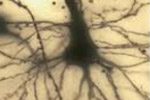
The attention network
The two brain areas also seem to play a key role in the "attention network", which keeps a subconscious tally of what is going on around us and directs our attention to the most pressing events, as well as monitoring sensations from the body to detect any changes.
What's more, both regions are active when a person recognises their reflection in the mirror, suggesting that these parts of the brain underlie our sense of self - a key component of consciousness.
The ACC and FI take inputs from the body and tie them together with social cues, thoughts and emotions to quickly and efficiently alter our behaviour.
This may contribute to the way we perceive the passage of time.
When something emotionally important is happening, there is more to process, and because of this time seems to slow down...
 Search for more... Search for more...
|
|

Mreža za pozornost
Čini se da ova dva područja unutar mozga također imaju ključnu ulogu u "mreži za pozornost", koja u podsvijesti drži ono što se događa oko nas i usmjerava našu pozornost na najvažnija događanja, a ujedno prati osjete iz tijela kako bi otkrila bilo kakve promjene.
Štoviše, obje su regije aktivne kada osoba prepoznaje svoj odraz u ogledalu, što sugerira da su ti dijelovi mozga temelj našeg osjećaja samog sebe - što je ključna komponenta svijesti.
ACC i FI područja dobivaju podatke iz tijela i povezuju ih sa društvenim signalima, mislima i osjećajima kako bi brzo i učinkovito mijenjala naše ponašanje.
To može pridonijeti načinu na koji doživljavamo vrijeme.
Kad se događa nešto važno u emocionalnom smislu, postoji više podataka za obradu, pa nam se zbog toga čini da vrijeme prolazi sporije...
 Potraži više... Potraži više...
|
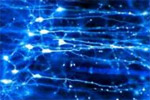
A social superhighway
VENs are probably important in all this, though we can only infer their role through circumstantial evidence.
That's because locating these cells, and then measuring their activity in a living brain hasn't yet been possible.
But their unusual appearance is a signal that they probably aren't just sitting there doing nothing.
They stand out anatomically, and anything that's so distinctive looking must have a distinct function...
 Search for more... Search for more...
|
|

Društvena superprometnica
VEN-ovi su vjerojatno bitni u svemu što smo naveli, iako o njihovoj ulozi možemo donositi zaključke samo kroz posredne dokaze.
Razlog tomu je što pronalazak tih stanica, a nakon toga i mjerenje njihove aktivnosti u živom mozgu do sada nije bilo izvedivo.
No, njihov je neobičan izgled znak da one vjerojatno nisu beskorisne i da ne rade ništa.
One se u anatomskom smislu ističu, a sve što je izgledom toliko prepoznatljivo mora imati i posebnu funkciju...
 Potraži više... Potraži više...
|

Emotions and empathy
Post-mortem examinations of the brains of people with autism also bolster the idea that VENs lie at the heart of our emotions and empathy.
According to one recent study, people with autism may fall into two groups: some have too few VENs, perhaps meaning that they don't have the necessary wiring to process social cues, while others have far too many.
The latter group would seem to fit with one recent theory of autism, which proposes that the symptoms may arise from an over-wiring of the brain.
Perhaps having too many VENs makes emotional systems fire too intensely, causing people with autism to feel overwhelmed by emotions...
 Search for more... Search for more...
|
|

Osjećaji i empatija
Posthumni pregledi mozga osoba s autizmom također podupiru ideju da su VEN-ovi centar naših osjećaja i suosjećanja.
Prema jednom nedavnom istraživanju, osobe s autizmom možemo svrstati u dvije skupine: jedna skupina ima premalo VEN-ova, što možda znači da ti ljudi nemaju potrebno ožičenje za obradu društvenih signala, dok ih druga skupina ima daleko previše.
Čini se da se potonja skupina uklapa u jednu nedavnu teoriju autizma, koja sugerira da se simptomi autizma mogu pojaviti i zbog prevelikog ožičenja u mozgu.
Možda se zbog previše VEN-ova emocionalni sustavi aktiviraju previše intenzivno, pa osobe s autizmom dobivaju osjećaj preplavljenosti osjećajima...
 Potraži više... Potraži više...
|

Finely tuned cells
Yet VENs also crop up in hippos and giraffes - not renowned for their social lives.
The cells have also been spotted in macaques, which don't reliably pass the mirror test, although they are social animals.
It could be that these creatures possess some kind of precursors of the finely tuned cells found in highly social species.
There are probably homologues of VENs in all mammals.
That's not to say they're shaped the same way but they are located in the same bit of cortex and they are expressing the same genes.
It would make sense, after all, that whales and primates might both have recycled, and refined, older machinery present in a common ancestor rather than independently evolving the same mechanism.
Much more research is needed, however, to work out the anatomical differences and the functions of these cells in the different animals.
That work might even help us understand how these neurons evolved in the first place.
There are some ideas already...
 Search for more... Search for more...
|
|

Fino podešene stanice
Pa ipak, VEN-ovi se pojavljuju i kod vodenkonja i žirafa - životinja koje nisu poznate po društvenosti.
Stanice su također uočene kod majmuna po imenu makaki, koji ne prolaze pouzdano test sa zrcalom, iako su društvene životinje.
Može biti da ta stvorenja posjeduju neku vrstu preteče fino podešenih stanica koje možemo naći kod vrlo društvenih vrsta.
Vjerojatno postoji ekvivalent VEN-ovima kod svih sisavaca.
To ne znači da su oni oblikovani na isti način, već da se nalaze u istom dijelu korteksa i izražavaju iste gene.
Na kraju krajeva, imalo bi smisla da su i kitovi i primati možda reciklirali i precizno podesili starije sklopove koji su bili prisutni kod zajedničkog pretka, umjesto da su samostalno razvili isti mehanizam.
Međutim, potrebna su još mnoga istraživanja kako bismo shvatili anatomske razlike i funkcije tih stanica kod različitih životinja.
Ovaj bi nam rad čak mogao pomoći i da shvatimo kako su se ti neuroni uopće razvili.
Već postoje neke ideje...
 Potraži više... Potraži više...
|
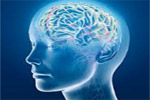
Our language is loaded with analogies
VENs in one part of the FI are expressing the genes for hormones that regulate appetite.
There are also a lot of studies showing links between smell and taste and strong emotions.
Our physical reaction to something we find morally disgusting, for example, is more or less identical to our reaction to a bitter taste, suggesting they may share common brain wiring.
Also, judging a morally questionable act, such as theft, while smelling something disgusting leads to harsher moral judgements.
What's more, our language is loaded with analogies - we might find an experience "delicious", or a person "nauseating".
This is no accident.
However, it is only in highly social animals that VENs live exclusively in the scent and taste regions...
 Search for more... Search for more...
|
|

Naš je jezik prepun analogija
VEN-ovi u jednom dijelu FI područja izražavaju gene za hormone koji reguliraju apetit.
Postoje brojne studije koje pokazuju vezu između mirisa i okusa i snažnih emocija.
Naša fizička reakcija na nešto što smatramo moralno odvratnim, na primjer, više ili manje je identična reakciji na gorak okus, što sugerira da te dvije reakcije možda dijele zajedničko ožičenje unutar mozga.
Također, osuđivanje moralno upitnog djela, poput krađe, uz istovremeno mirisanje nečeg odvratnog dovodi do oštrijih moralnih prosudbi.
Štoviše, naš je jezik prepun analogija - možemo smatrati neko iskustvo "ukusnim" ili neku osobu "odvratnom".
To nije slučajnost.
Međutim, samo kod vrlo društvenih životinja VEN-ovi žive isključivo u područjima za miris i okus...
 Potraži više... Potraži više...
|
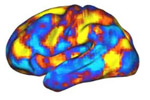
The energy calculation system
The bigger the brain, the more energy it takes to run, so it is crucial that it operates as efficiently as possible.
A system that continually monitors the environment and the people or animals in it would therefore allow it to adapt quickly to a situation to save as much energy as possible.
Evolution produced an energy calculation system that incorporated not just the sensory inputs from the body but the sensory inputs from the brain.
And the fact that we are constantly updating this picture of "how I feel now" has an interesting and very useful by-product: we have a concept that there is an "I".
Evolution produced a very efficient calculation of energy utilisation.
This calculation had a by-product that provided a subjective representation of our feelings...
 Search for more... Search for more...
|
|

Sustav za izračun energije
Što je mozak veći, potrebno je više energije za njegov rad, pa je važno da on funkcionira što efikasnije.
Sustav koji kontinuirano prati okolinu, kao i ljude i životinje u njemu, omogućio bi mu da se brzo prilagodi situaciji kako bi uštedio što je moguće veću količinu energije.
Evolucija je proizvela sustav za izračun energije koji sadržava ne samo osjetilne ulaze iz tijela, već i osjetilne ulaze iz mozga.
A činjenica da stalno osvježavamo tu sliku "kako se sada osjećam" ima zanimljiv i vrlo koristan nusproizvod: imamo koncept da postoji "ja".
Evolucija je proizvela vrlo učinkovit izračun za korištenje energije.
Taj je izračun imao nusproizvod koji je osiguravao subjektivan prikaz naših osjećaja...
 Potraži više... Potraži više...
|
|
|




